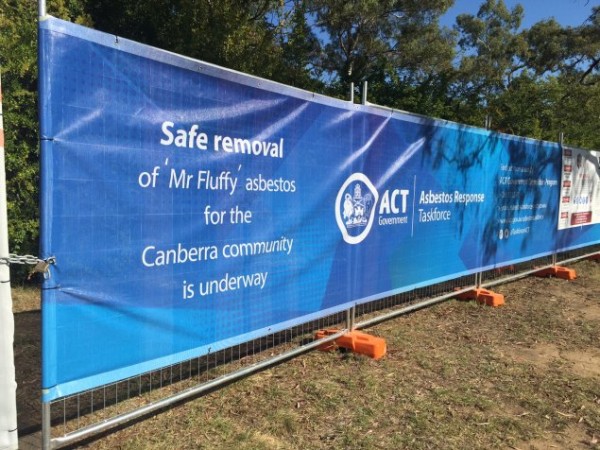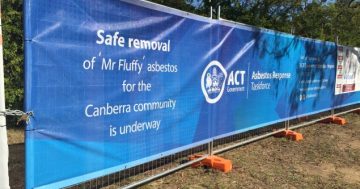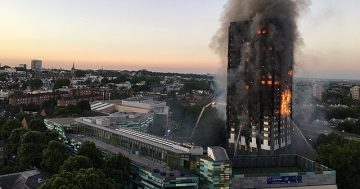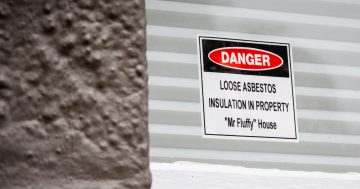
A petition has called for a board of inquiry to investigate the government’s Mr Fluffy buyback scheme, dating back to its inception in 2014. Photo: File.
A group of Canberrans have called for a board of inquiry to examine the transparency, accountability, fairness and flexibility of the “voluntary” Mr Fluffy asbestos buyback scheme.
A petition bearing 100 signatures has been tabled at the Legislative Assembly demanding an investigation into the scheme, claiming it wasn’t on just terms.
“The buyback scheme was designed to exert maximum pressure on ‘Mr Fluffy’ homeowners to surrender their properties and associated rights whilst maximizing large profits from ‘Mr Fluffy’ land sales, negating their responsibility to ‘Mr Fluffy’ homeowners and the general public,” principle petitioner Lorraine Carvalho wrote in the document’s explainer.
“It is almost a decade since this ‘voluntary’ buyback scheme was implemented. Remaining ‘Mr Fluffy’ homeowners are, in the majority, elderly citizens. They feel they are being treated as second-class citizens and will go to their graves mentally and financially scarred through no fault of their own.”
The petition stated the government was warned about the issue in Canberra homes in 2005 and was advised to disclose to owners the “presence of harmful and potentially life-threatening asbestos in their homes”.
“Some contaminated homes were sold and resold on the open market. Many of these homes were renovated and extended,” it said.
An independent review from 2010 recommended the Territory strengthen warnings and provide updated information to existing Mr Fluffy homeowners, tenants and tradespeople.
The ACT Government then secured a $1 billion loan from the Commonwealth in 2014 to introduce the buyback scheme.
Mrs Carvalho argued a board of inquiry was needed to protect society’s “fundamental core principles” of accountability and transparency and that this issue was of “significant” public interest.
Her petition called for the government to establish a board of inquiry “as a matter of urgency” to investigate why the ACT Government chose the scheme over compulsory acquisition and examine the program from its inception in 2014.
It has also called for the board of inquiry to conduct a financial audit on the sale of Mr Fluffy blocks, the cost of the scheme, and outline where the unspent money from the $1 billion loan has gone.
The petition was sponsored by Canberra Liberals Murrumbidgee MLA Ed Cocks, who said the government’s response to Mr Fluffy was one of the things that had inspired him to get involved in politics.
“When I saw what was going on all that time ago, it struck me as completely untenable that a government would treat its citizens, victims of a situation that was none of their fault, so poorly,” he said.
He argued this petition was “simply” asking the government to take a step which he felt should have been taken years ago.
“[It] would provide not only closure but a direction for the future for families that don’t see one right now,” Mr Cocks said.
Other terms of reference requested in the petition include:
- Investigate “harassment” of Mr Fluffy homeowners, those who surrendered their properties and those who didn’t sign up to the Buyback Scheme.
- Investigate retrospective legislative changes.
- Investigate the “lack of flexibility and willingness to negotiate” with individual homeowners who didn’t fit within the boundaries of the Mr Fluffy Loose-fill Asbestos Eradication Scheme.
- Investigate the handling and instructions given to the Taskforce, including “intimidation tactics used to coerce Mr Fluffy homeowners to join the scheme, in particular, the elderly”.
- Investigate in the period 2003 to 2014 what the then ACT Industrial Relations Minister was informed about the degree of contamination and associated risk factors posed by Mr Fluffy, including why homeowners weren’t informed of the dangers before renovating their homes, why homes were allowed to be sold to “unsuspecting buyers”, and why it took 10 years before a scheme was put in place.
- Investigate why, since 2016, has the ACT Government “continually refused” to introduce compulsory acquisition to obtain the remaining Mr Fluffy homes.
- Determine when Mr Fluffy will be eradicated from Canberra homes as promised in 2014.
- Investigate why the Mr Fluffy chapter in Canberra’s history has been allowed to drag on far beyond the set timelines “with no end in sight”.
- Determine what plans exist to capture the remaining Mr Fluffy homes not surrendered.
- Investigate any potential future risks of exposure to Amosite Asbestos.
The government has three months to respond to the petition.

















